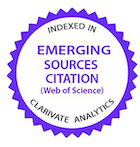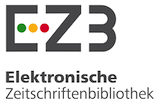Influence of silver nitrate on the mechanical properties of orthopedic bone cement and in vitro antibacterial activity
DOI:
https://doi.org/10.1590/1809-6891v26e-79814EAbstract
This study aimed to evaluate the influence of silver nitrate (AgNO3) on the mechanical properties of polymethyl methacrylate (PMMA) bone cement by static testing and in vitro antibacterial activity. Two groups were formed: Group 1, control (n=10); and Group 2, cement with silver nitrate (n=10). In Group 1, the cement was prepared manually by mixing 20 g of PMMA powder with 10 ml of methyl methacrylate liquid. In Group 2, the cement was prepared as in Group 1; however, 0.25 g of silver nitrate was added to 20 g of PMMA powder. No statistical differences were observed for bending strength with (61.80 ± 4.96 MPa) or without silver nitrate (60.20 ± 5.88 MPa). Statistical differences were verified in the higher compressive strength for the control (78.60 ± 3.20 MPa) compared to cement with silver nitrate specimens (74.20 ± 1.61 MPa). Antimicrobial sensitivity testing showed no effect of cement with silver nitrate on Staphylococcus aureus, Streptococcus sp., Pseudomonas aeruginosa, and Escherichia coli. In conclusion, the concentration of silver nitrate did not change the mechanical properties of the PMMA bone cement in the bending test, but it had a negative effect in the compression testing. In addition, the product did not reduce the bacterial load in the in vitro test.
Downloads
References
Webb JC, Spencer RF. The role of polymethylmethacrylate bone cement in modern orthopaedic surgery. The Journal of Bone and Joint Surgery. British volume. 2007; 89(7):851–857. https://doi.org/10.1302/0301-620X.89B7.19148
Magnan B, Bondi M, Maluta T, Samaila E, Schirru L, Dall'Oca C. Acrylic bone cement: current concept review. Musculoskeletal Surgery. 2013; 97(2):93–100. https://doi.org/10.1007/s12306-013-0293-9
Cavalu S. Acrylic bone cements: new insight and future perspective. Key Engineering Materials. 2017; 745:39-49. https://doi.org/10.4028/www.scientific.net/KEM.745.39
van Vugt TAG, Arts JJ, Geurts JAP. Antibiotic-loaded polymethylmethacrylate beads and spacers in treatment of orthopedic infections and the role of biofilm formation. Frontiers in Microbiology. 2019; 10:1626. https://doi.org/10.3389/fmicb.2019.01626
Hayes G, Moens N, Gibson T. A review of local antibiotic implants and applications to veterinary orthopaedic surgery. Veterinary and Comparative Orthopaedics and Traumatology. 2013; 26(4):251–259. https://doi.org/10.3415/VCOT-12-05-0065
Walker LC, Baker P, Holleyman R, Deehan D. Microbial resistance related to antibiotic-loaded bone cement: a historical review. Knee Surgery, Sports Traumatology, Arthroscopy. 2017; 25(12):3808–3817. https://doi.org/10.1007/s00167-016-4309-5
Schwarz EM, McLaren AC, Sculco TP, Brause B, Bostrom M, Kates SL, Parvizi J, Alt V, Arnold WV, Carli A, Chen AF, Choe H, Coraça-Huber DC, Cross M, Ghert M, Hickok N, Jennings JA, Joshi M, Metsemakers WJ, Ninomiya M, Nishitani K, Oh I, Padgett D, Ricciardi B, Saeed K, Sendi P, Springer B, Stoodley P, Wenke JC; Hospital for Special Surgery. Biofilm Symposium Workgroup. Adjuvant antibiotic-loaded bone cement: Concerns with current use and research to make it work. Journal of Orthopaedic Research. 2021; 39(2):227–239. https://doi.org/10.1002/jor.24616
Lewis G. Antibiotic-free antimicrobial poly (methyl methacrylate) bone cements: A state-of-the-art review. World Journal of Orthopedics. 2022; 13(4):339–353. https://doi.org/10.5312/wjo.v13.i4.339
Brennan SA, Ní Fhoghlú C, Devitt BM, O'Mahony FJ, Brabazon D, Walsh A.Silver nanoparticles and their orthopaedic applications. The Bone & Joint Journal. 2015; 97-B(5):582–589. https://doi.org/10.1302/0301-620X.97B5.33336
Naganthran A, Verasoundarapandian G, Khalid FE, Masarudin MJ, Zulkharnain A, Nawawi NM, Karim M, Che Abdullah CA, Ahmad SA. Synthesis, characterization and biomedical application of silver nanoparticles. Materials (Basel). 2022; 15(2):427. https://doi.org/10.3390/ma15020427
Chaloupka K, Malam Y, Seifalian AM. Nanosilver as a new generation of nanoproduct in biomedical applications. Trends in Biotechnology. 2010; 28(11):580–588. https://doi.org/10.1016/j.tibtech.2010.07.006
Lewis G. Properties of nanofiller-loaded poly (methyl methacrylate) bone cement composites for orthopedic applications: a review. Journal of Biomedical Materials Research. 2017; 105(5):1260–1284. https://doi.org/10.1002/jbm.b.33643
Saha S, Pal S. Mechanical properties of bone cement: a review. Journal of Biomedical Materials Research. 1984; 18(4):435–462. https://doi.org/10.1002/jbm.820180411
Wang J-S, Dunne N. Bone cement fixation: acrylic cements. In: Revell PA, ed. Joint Replacement Technology. United Kingdom: Woodhead Publishing; 2008. p. 212-51.
Ficklin MG, Kunkel KA, Suber JT, Gerard PD, Kowaleski MP. Biomechanical evaluation of polymethyl methacrylate with the addition of various doses of cefazolin, vancomycin, gentamicin, and silver microparticles. Veterinary and Comparative Orthopaedics and Traumatology. 2016; 29(5):394–401. https://doi.org/10.3415/VCOT-16-01-0005
Slane J, Vivanco J, Rose W, Ploeg HL, Squire M. Mechanical, material, and antimicrobial properties of acrylic bone cement impregnated with silver nanoparticles. Materials Science & Engineering. 2015; 48:188–196. https://doi.org/10.1016/j.msec.2014.11.068
Alsukhayri AA, Alwagdani AA, Ibrahim MI, Fahmi MK. (2019). Effect of silver nanoparticles fillers addition on flexural strength, fracture toughness, impact strength, compressive strength and hardness of heat-polymerized acrylic resin. International Journal of Advanced Research. 2019; 7(9):1419-1422. http://dx.doi.org/10.21474/IJAR01/9798
Alt V, Bechert T, Steinrücke P, Wagener M, Seidel P, Dingeldein E, Domann E, Schnettler R. (2004). An in vitro assessment of the antibacterial properties and cytotoxicity of nanoparticulate silver bone cement. Biomaterials. 2004; 25(18):4383–4391. https://doi.org/10.1016/j.biomaterials.2003.10.078
Oei JD, Zhao WW, Chu L, DeSilva MN, Ghimire A, Rawls HR, Whang K. Antimicrobial acrylic materials with in situ generated silver nanoparticles. Journal of Biomedical Materials Research. 2012; 100(2):409–415. https://doi.org/10.1002/jbm.b.31963
Sodagar A, Kassaee MZ, Akhavan A, Javadi N, Arab S, Kharazifard MJ. Effect of silver nano particles on flexural strength of acrylic resins. Journal of Pprosthodontic Research. 2012: 56(2):120–124. https://doi.org/10.1016/j.jpor.2011.06.002
Prokopovich P, Leech R, Carmalt CJ, Parkin IP, Perni S. A novel bone cement impregnated with silver-tiopronin nanoparticles: its antimicrobial, cytotoxic, and mechanical properties. International Journal of Nanomedicine. 2013; 8:2227–2237. https://doi.org/10.2147/IJN.S42822
Prokopovich P, Köbrick M, Brousseau E, Perni S. (2015). Potent antimicrobial activity of bone cement encapsulating silver nanoparticles capped with oleic acid. Journal of Biomedical Materials Research. 2015; 103(2):273–281. https://doi.org/10.1002/jbm.b.33196
Ghaffari T, Hamedirad F, Ezzati B. In vitro comparison of compressive and tensile strengths of acrylic resins reinforced by silver nanoparticles at 2% and 0.2% concentrations. Journal of Dental Research, Dental Clinics, Dental Prospects. 2014; 8(4):204–209. https://doi.org/10.5681/joddd.2014.037
Clement JL, Jarrett PS. Antibacterial silver. Metal-based Drugs. 1994; 1(5-6):467–482. https://doi.org/10.1155/MBD.1994.467
Braga NB, Pires LCSR, Oliveira HP, Costa MM. 2018. Antimicrobial and antibiofilm activity of silver nanoparticles against Aeromonas spp. isolated from aquatic organisms. Pesquisa Veterinária Brasileira. 2018; 38(2):244-249. https://doi.org/10.1590/1678-5150-PVB-4805
Jackson J, Lo J, Hsu E, Burt HM, Shademani A, Lange D. The combined use of gentamicin and silver nitrate in bone cement for a synergistic and extended antibiotic action against gram-positive and gram-negative bacteria. Materials (Basel). 2021; 14(12):3413. https://doi.org/10.3390/ma14123413
Published
How to Cite
Issue
Section
License
Copyright (c) 2025 Brazilian Animal Science/ Ciência Animal Brasileira

This work is licensed under a Creative Commons Attribution 4.0 International License.
Authors who publish with this journal agree to the following terms:
- Authors retain copyright and grant the journal right of first publication with the work simultaneously licensed under a Creative Commons Attribution License that allows others to share the work with an acknowledgement of the work's authorship and initial publication in this journal.
- Authors are able to enter into separate, additional contractual arrangements for the non-exclusive distribution of the journal's published version of the work (e.g., post it to an institutional repository or publish it in a book), with an acknowledgement of its initial publication in this journal.
- Authors are permitted and encouraged to post their work online (e.g. in institutional repositories or on their website) prior to and during the submission process, as it can lead to productive exchanges, as well as earlier and greater citation of published work (See The Effect of Open Access).
Data statement
-
The research data is available on demand, condition justified in the manuscript































